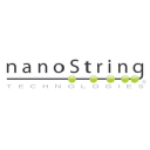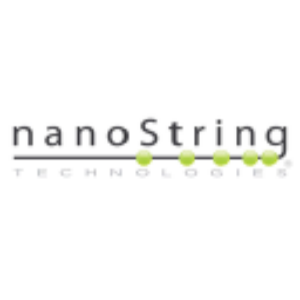Welcome to our dedicated page for NSTG news (Ticker: NSTG), a resource for investors and traders seeking the latest updates and insights on NSTG stock.
NanoString Technologies, Inc. (NASDAQ: NSTG) drives advancements in life science research and molecular diagnostics through its innovative tools like the nCounter® Analysis System. This page aggregates official updates, financial disclosures, and critical developments impacting the company’s trajectory.
Access real-time announcements including product launches, patent litigation updates, and strategic partnerships. Investors gain insights into operational milestones, while researchers track applications in oncology, immunology, and neuroscience studies.
Discover coverage of earnings reports, regulatory filings, and scientific breakthroughs validated by 300+ peer-reviewed studies. Our neutral reporting ensures you stay informed without promotional bias.
Bookmark this page for streamlined access to NSTG’s evolving story. Check back regularly updated content to support data-driven decisions in biotech investing and research.
NanoString Technologies (NASDAQ: NSTG) has announced the launch of the Mouse Whole Transcriptome Atlas (WTA) for spatial analysis using its GeoMx Digital Spatial Profiler. This product enhances the GeoMx RNA portfolio, facilitating full transcriptome spatial RNA and high-plex protein analysis. Designed for NGS readout on Illumina sequencers, the WTA broadens applications beyond oncology and immunology to include neuroscience and developmental biology. The technology provides comprehensive insights into gene expression and pathology, supporting critical research in Alzheimer's disease.
NanoString Technologies, Inc. (NASDAQ:NSTG) reported financial results for Q1 2021, highlighting product and service revenue of $31.4 million, a 28% year-over-year growth. Instrument revenue was $11.7 million, up 19%, driven by GeoMx® DSP instruments contributing $7.0 million. Consumables revenue grew 39% to $16.0 million. Cash and short-term investments totaled $409.9 million. The company noted a surge in demand for GeoMx DSP and published 12 new peer-reviewed publications during the quarter.
NanoString Technologies (NASDAQ: NSTG) announced a forthcoming peer-reviewed publication in Nature using its GeoMx® Digital Spatial Profiler (DSP). The study focuses on SARS-CoV-2's impact on human lungs, aimed at understanding COVID-19 pathology to inform therapeutic strategies. Researchers from renowned institutions, including the Broad Institute and Beth Israel Deaconess Medical Center, contributed to creating a comprehensive cell-type atlas from lung autopsy samples. This publication represents the 50th peer-reviewed achievement for NanoString's DSP, emphasizing its significance in advancing biological research.
NanoString Technologies (NASDAQ: NSTG) announced the presentation highlights of spatial biology research at the AACR 2021 meeting to be held from April 10-15, 2021. The GeoMx® Digital Spatial Profiler (DSP) will be featured in eight abstracts, showcasing its capability in profiling RNA and proteins in breast cancer research. Notably, four abstracts will be presented by the GeoMx Breast Cancer Consortium, aiming to create a comprehensive database of novel biomarkers. The DSP has been referenced in numerous publications and provides significant insights into tumor microenvironments and treatment responses.
NanoString Technologies, Inc. (NASDAQ:NSTG) plans to release its first quarter 2021 operating results after market close on May 10, 2021. The company will host a conference call at 4:30 PM ET to discuss the results and provide a business update. Interested parties can register for the call in advance through their website. A replay will be available starting May 10 at 7:30 PM ET until May 17, 2021. NanoString is known for its nCounter® Analysis System, utilized in over 4,000 peer-reviewed publications, and its GeoMx™ Digital Spatial Profiler for RNA and protein profiling.
NanoString Technologies (NASDAQ: NSTG) announced the publication of two peer-reviewed studies utilizing its GeoMx® Digital Spatial Profiler in Nature and Nature Communications. These studies examined SARS-CoV-2 infection using lung tissue from COVID-19 autopsies, analyzing over 1,800 genes. The findings highlight unique immune responses and tissue damage related to COVID-19 progression. Additional insights were gained into the difference in immune cell composition between early and late mortality patients. NanoString's DSP technology continues to showcase its capability in advancing understanding of complex diseases.
NanoString Technologies (NASDAQ:NSTG) has partnered with Doloromics through a Technology Access Program grant aimed at advancing research into chronic pain diseases. This collaboration will leverage NanoString's GeoMx® Digital Spatial Profiler technology to spatially analyze the dorsal root ganglion (DRG). It focuses on delivering high-resolution spatial biology that integrates multi-omics datasets from patient tissues, potentially leading to new therapeutic targets. The partnership emphasizes the significance of spatial profiling in understanding pain mechanisms and drug development.
NanoString Technologies (NASDAQ: NSTG) announced the appointment of Dr. Dana Rollison and Janet George to its board on March 8, 2021. Dr. Rollison, previously at Moffitt Cancer Center, has extensive experience in data science and cancer research, while George brings over 15 years of tech leadership from Oracle and other firms. Their expertise is expected to enhance NanoString's capabilities in spatial biology and big data analytics within life sciences, reflecting the company's commitment to advancing biological research applications.
NanoString Technologies reported a Q4 2020 revenue of $35.7 million, marking a 6% year-over-year growth. Instrument revenue surged 11% to $15.3 million, bolstered by the GeoMx DSP instrument sales. Full-year revenues totaled $111.4 million, reflecting a 7% annual increase. However, consumables revenue declined 18% for the year. The company holds $440.7 million in cash, with a projected 2021 revenue between $140 million and $150 million, indicating a potential growth of 26% to 35%.
NanoString Technologies (NASDAQ: NSTG) announced the launch of its Technology Access Program (TAP) for the Spatial Molecular Imager (SMI), allowing researchers to submit tissue samples for comprehensive data analysis using a 1000-plex RNA panel. The company will showcase its GeoMx Digital Spatial Profiler (DSP) and Whole Transcriptome Atlas (WTA) during the 2021 AGBT conference. The SMI platform enhances genomic research by visualizing thousands of RNAs directly in tissue samples. CEO Brad Gray emphasized the expanded capabilities for spatial biology applications.


